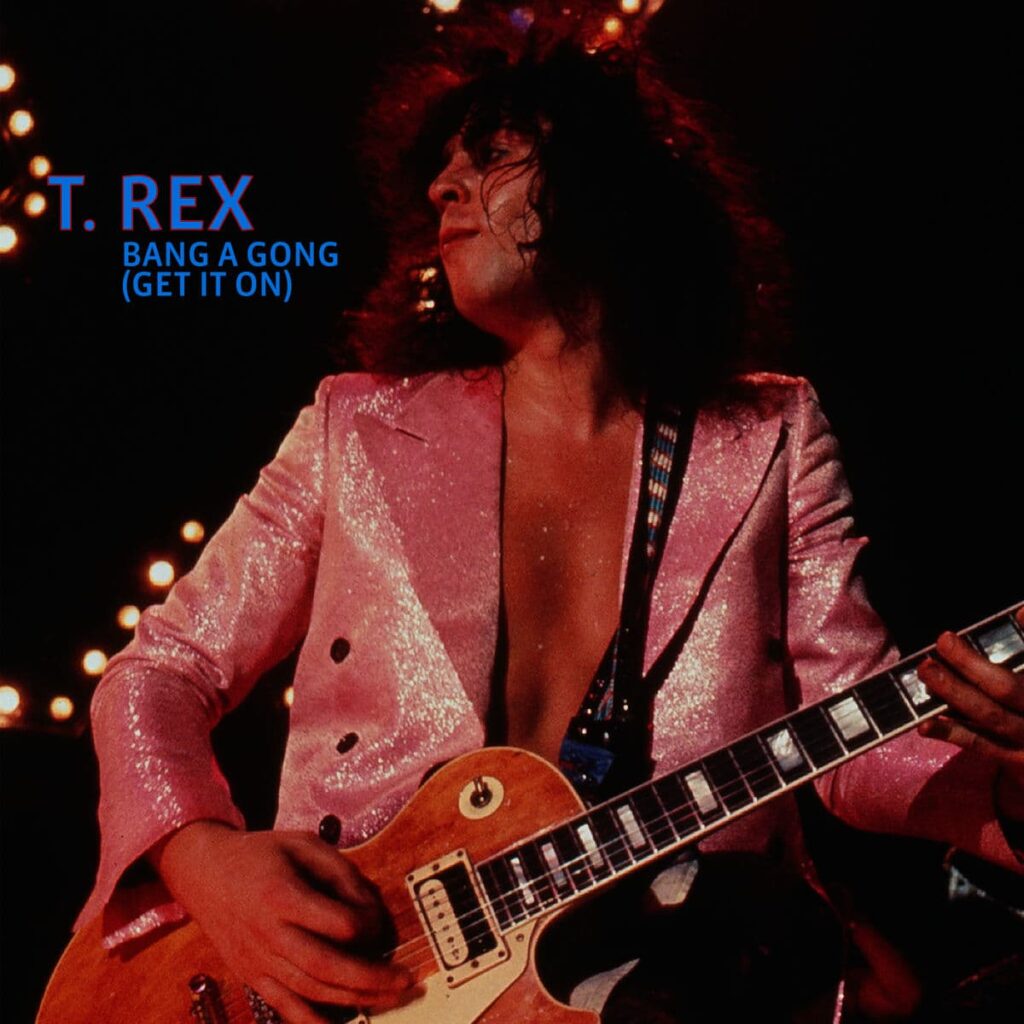
A hypnotic, boogie-fueled anthem of pure glam rock seduction.
Some songs aren’t just songs; they’re moments etched in time, a sound that transports you back to a specific era with the first thumping beat. For many of us, that’s what happens the moment the opening riff of “Bang a Gong (Get It On)” kicks in. It’s a rush of pure, unadulterated nostalgia, a shimmering gold-dust memory of a time when glam rock ruled the airwaves and the enigmatic Marc Bolan, with his cascading curls and glitter-dusted cheekbones, was a rock god. This was more than music; it was a revolution in style and sound.
Released in the summer of 1971, the song, originally titled simply “Get It On,” was a monumental hit for T. Rex. In their native UK, it was a sensation, rocketing to the top of the Official Singles Chart and holding the coveted number one spot for four glorious weeks. But its journey across the Atlantic was a different story, and one that gives the song its dual identity. In the US, the band was a lesser-known quantity, and to avoid confusion with another song titled “Get It On” by the band Chase, it was cleverly renamed “Bang a Gong (Get It On).” This new title, with its suggestive, rhythmic flair, not only helped it stand out but perfectly encapsulated the song’s primal, boogie-rock energy. The strategy worked, and the track became the band’s only significant US hit, climbing to a respectable number 10 on the Billboard Hot 100 chart in early 1972, forever solidifying T. Rex‘s place in the American rock canon.
The story behind this iconic track is as fascinating as the song itself. It was the centerpiece of the groundbreaking 1971 album, Electric Warrior, an LP that is widely considered the very genesis of the glam rock movement. Marc Bolan, the flamboyant frontman and visionary songwriter, had transformed the band from the psychedelic folk-rock of Tyrannosaurus Rex into the slick, electric, and utterly captivating T. Rex. “Get It On” was a testament to this new sound, a bluesy, hard-rocking tribute to his musical heroes. Bolan himself openly acknowledged the song’s direct debt to Chuck Berry’s “Little Queenie,” even going so far as to lift a line from the Berry track for the outro: “Meanwhile, I’m still thinking…” It was an homage, a knowing wink to the rock and roll heritage that had paved the way for his own brand of androgynous rock swagger.
As for the meaning of the song, the lyrics are a masterclass in suggestive, poetic ambiguity. They’re a swirling mix of car metaphors (“You’re built like a car”), mythological references (“You’ve got the teeth of the hydra upon you”), and dazzling, non-sensical imagery (“hubcap diamond star halo”). At its core, it’s a song about lust and attraction, a raw and beautiful ode to a woman who is both “dirty and sweet.” The repeated, insistent chant of the title is a clear call to action, a rhythmic invitation to get swept up in the moment. Yet, the cryptic, almost psychedelic lyrics allow for a deeper reading, leaving much to the imagination. The song is a feeling, a mood, a moment of electrifying sensuality that doesn’t need to be defined or dissected.
For those of us who came of age in the 70s, “Bang a Gong (Get It On)” is the soundtrack to a thousand forgotten memories—the spin of a vinyl record on a Friday night, the hum of a cheap radio, the feeling of freedom that came with a guitar riff. It’s a snapshot of a time when a simple three-minute pop song could feel like the most important thing in the world, a gateway to a world of glitter, satin, and swagger. With its chugging rhythm, wailing saxophone solo from the brilliant Ian McDonald, and Bolan’s inimitable, breathless delivery, it’s a track that still sounds fresh, dangerous, and impossibly cool, reminding us that true rock and roll magic is a timeless, beautiful thing.